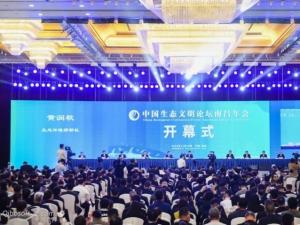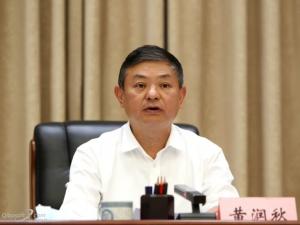AN eva lUATION OF THE CHINESE LEGAL SYSTEM(四)
|
2 Amendment), Law of the People’s Republic of China on Intangible Cultural Heritage (2011), Program on Sustainable Development of Technology (2001–2010), Notice of the State Council on Recent Focuses on Building a Conservation-Oriented Society (2005), National Program of Action on Environmental Promotion and Education (2011–2015). 110 FRONTIERS OF LAW IN CHINA [Vol. 8: 103 The statistical standards of Table 1 are as follows. First, the above legal and policy documents all clearly list “sustainable development” as provisions. Publicly pledged regulations are not included. Second, since the higher level documents are listed in the Table, the lower level documents that do not provide on sustainable development theoretically belong to this system, but are not included in the above Table. This is obvious in the field of pollution control. Third, some laws provide on “sustainable development” in their amendments. The statistical deadline is according to the year of amendment. Fourth, strictly speaking, among the seven index fields listed above, general regulations, ecological resource protection, pollution control and clean production strictly belong to the scope of natural resources and environment protection law, and the other three fields should be the related fields of natural resources and environmental protection law. Finally, only the regulations enacted by the central government are counted. Local governments pay increasing attention to sustainable development through local regulations and policies. I. eva lUATION OF THE LEGAL SYSTEM OF CHINA ON SUSTAINABLE DEVELOPMENT A. Priority Position There are 239 laws in total in the temporary legal system14 and 30 of them are laws on natural resources and environmental protection. Among the laws, publicly pledged ones regarding sustainable development amount to 20 (laws on natural resources and environmental protection amount to 14). “Under the undoubtedly holy system of civilization, the position of sustainable development in China’s legal system enjoys higher priority and more initiatives.”15 This is the aspect which the Chinese government stresses the most. 14 http://www.news.china.com.cn (last visited Oct. 3, 2011). 15 V. Lowe, Sustainable Development and Unsustainable Arguments, in A. Boyle and D. Freestone eds., International Law and Sustainable Development Past Achievements and Future Challenges, Oxford University Press (Oxford), at 30 (1999). 2013] CHINESE LEGAL SYSTEM ON SUSTAINABLE DEVELOPMENT 111 B. Time These 20 laws were promulgated after the United Nation’s Rio Declaration in 1992 and China’s Agenda 21. Therefore, China’s sustainable development law system can be regarded as the legal protection system of the Rio Declaration and China’s Agenda 21, which marks the implementation focus of China’s sustainable development (see Fig. 1). Fig. 1 Time Figure of the Formation of Sustainable Development System C. Levels of Regulations There are four levels of national legal regulations which are the Constitution, laws (basic laws made by the National People’s Congress and other general laws made by its Standing Committee), administrative regulations, and department regulations. Besides, some important policies are directly related to laws and department regulations, and have equal effects as the former. On the whole, China’s legal system on sustainable development is comparatively loose. The Environmental Protection Law of the People’s Republic of China, which plays a fundamental role in the protection of natural resources and environment, is the general law enacted by the Standing Committee of the National People’s Congress. This law was formulated in 1989 and has no provisions on sustainable development. It will be amended soon to incorporate sustainable department as its essential part. 112 FRONTIERS OF LAW IN CHINA [Vol. 8: 103 D. Fields of Regulations Most of the regulations in this system adopt sustainable development only as a legal principle and there are scanty special legislations on this subject. The effect of “general provisions” of the legal system of sustainable development cannot be denied. These provisions embody the idea of a holistic approach which allows for concerted action that sustainable development requires. The most important provisions in this area should be the Environmental Protection Law. But before the completion of the amendment, it cannot be included in this list and the Regulations on the Assessment of Environmental Impact of Plans are now taking the leading role. Policy regulations including national plans, decisions of law making bodies, and policies of the State Council are playing significant roles. Laws on technology, agriculture and intangible cultural heritage in China positively identify with sustainable development. In areas that closely concern sustainable development, such as intellectual property rights, commerce, investment, mining industry, finance, and tax revenue, the government has not yet formulated any legislations. E. eva luation Methods For methods of eva luating China’s legal system of sustainable development, we can refer to the seven sustainable elements proposed by Professor Nico Schriver as the follows:16 (1) The sustainable use of natural resources is essentially a conserving principle. That is to reasonably and cautiously utilize non-renewable resources and maintain the production of renewable resources over a long period of time. (2) To improve the development of macro-economy. Management on the national level to coordinate the relationship between environmental protection and economic development is of great importance. (3) Environmental protection especially stresses the protection of the interest of the next generation. 16 See Nico J. Schrijver, The Evolution Sustainable Development International Law: Inception, Meaning and Status, Hague Academy of International Law, at 186–96 (2008). 2013] CHINESE LEGAL SYSTEM ON SUSTAINABLE DEVELOPMENT 113 (4) Time element: temporality, permanence and timeliness. This has implications on three levels. First, it means the time it takes for natural resources and ecological system to recover and regenerate from exploration and damage. Second, it indicates the time that cannot be postponed to adopt major environmental policies. Third, it states the provisions on the interest of the next generation. (5) Public participation and human rights, especially social and economic rights, and the rights of participating in consultation and decision-making. (6) Good government. This requires a more democratic and responsible government to fulfill its obligations. (7) In |
我来说两句
已有0评论 点击全部查看






